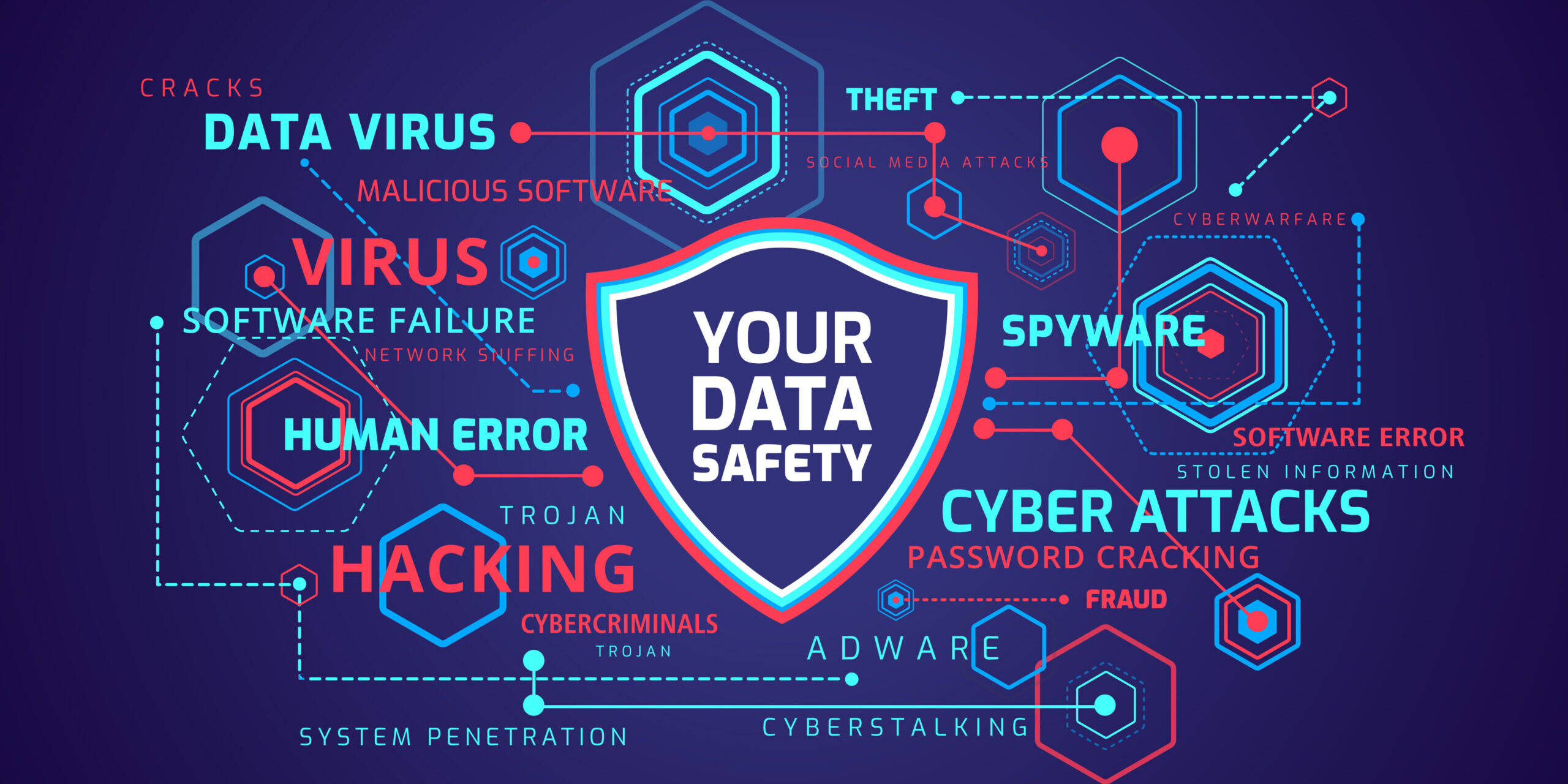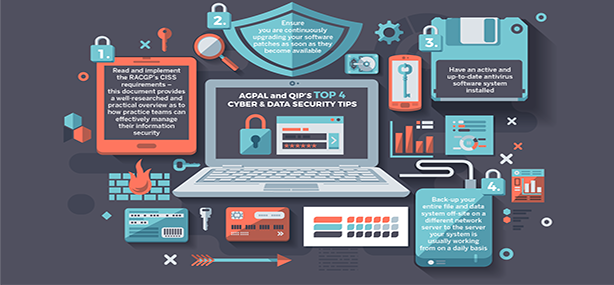The Crucial Function of Data and Network Security in Safeguarding Your Details
In an age where data violations and cyber hazards are progressively common, the significance of robust data and network protection can not be overstated. Organizations has to not just protect sensitive details but likewise ensure compliance with advancing regulative requirements. The implementation of effective safety actions, such as encryption and gain access to controls, is critical to preserving trust and functional honesty. The landscape of cyber threats is regularly changing, increasing questions regarding the adequacy of current techniques and what new strategies may be required to stay in advance of possible hazards. What lies in advance in this intricate security atmosphere?
Understanding Data Security
In today's digital landscape, an overwhelming majority of companies grapple with the intricacies of information protection. This essential element of infotech entails safeguarding delicate data from unauthorized accessibility, corruption, or burglary throughout its lifecycle. Information safety and security incorporates different methods and innovations, including file encryption, accessibility controls, and data masking, all targeted at safeguarding information versus breaches and susceptabilities.
A fundamental aspect of information safety and security is the identification and category of information based upon its sensitivity and importance. This category aids companies prioritize their safety and security initiatives, alloting resources to secure the most important details properly. Executing robust policies and procedures is necessary to make certain that workers understand their duty in preserving information safety and security.
Routine audits and evaluations help in determining prospective weak points within a company's data protection structure. Furthermore, staff member training is important, as human error stays a considerable consider information violations. By fostering a society of safety recognition, organizations can mitigate risks associated with expert threats and neglect.
Relevance of Network Safety
Network security stands as a keystone of an organization's general cybersecurity technique, with approximately 90% of businesses experiencing some type of cyber risk in recent times. The importance of network safety and security lies in its capability to secure delicate info and keep the stability of service operations. By securing network infrastructures, companies can stop unauthorized gain access to, information violations, and other destructive activities that could jeopardize their properties and online reputation.
Applying robust network safety and security gauges not only assists in mitigating risks but also promotes trust fund among stakeholders and clients. When customers are guaranteed that their financial and personal information is safe, they are much more most likely to involve with the organization, causing improved client loyalty and business growth.
Furthermore, a well-structured network security structure promotes compliance with various governing requirements. Organizations needs to abide by market standards and lawful mandates worrying information security, and reliable network protection practices can ensure conformity, therefore preventing potential fines.

Usual Cyber Dangers
Organizations have to remain watchful versus a variety of cyber risks that can threaten their network protection efforts. Among one of the most common risks is malware, which includes infections, worms, and ransomware that can interfere with procedures, take data, or hold details hostage. Phishing strikes, where malicious stars pose relied on entities to trick people into disclosing sensitive details, proceed to expand in elegance, making user education and learning critical.
An additional common danger is dispersed denial-of-service (DDoS) assaults, which overload systems with traffic, making them inaccessible to legit users. Insider risks, whether willful or accidental, position significant risks as employees may accidentally reveal sensitive data or purposefully manipulate their access for malicious objectives.
Additionally, vulnerabilities in software and equipment can be manipulated by cybercriminals, highlighting link the value of routine updates and spot monitoring. Social engineering tactics better complicate the landscape, as assaulters manipulate people into revealing secret information via mental control.
As these hazards advance, organizations have to preserve a positive method to determine, alleviate, and respond properly to the ever-changing cyber hazard landscape, protecting their useful information and preserving trust fund with stakeholders. fft pipeline protection.
Best Practices for Defense
Carrying out durable protection actions is crucial for guarding delicate information and preserving operational honesty. Organizations needs to start by carrying out extensive risk analyses to determine vulnerabilities within their systems. This proactive strategy allows the prioritization of safety and security initiatives customized to the certain needs of the organization.
Taking on strong password plans is essential; passwords need to be complicated, on a regular basis transformed, and handled using safe and secure password administration tools. Multi-factor verification (MFA) adds an additional layer of safety by needing added verification approaches, therefore reducing the danger of unapproved gain access to.
Normal software updates and spot management are vital to protect versus known vulnerabilities. Applying firewall softwares and breach detection systems can additionally secure networks from outside hazards. Employee training is similarly vital; staff must be enlightened on recognizing phishing efforts and recognizing the importance of data protection protocols.
Information encryption should be employed for sensitive information, both at rest and in transit, to make sure that also if information is obstructed, it stays unattainable (fft pipeline protection). Companies need to establish and on a regular basis examination event reaction plans to ensure swift activity in the occasion of a safety violation. By adhering to these best techniques, companies can improve their safety position and protect their critical information possessions
Future Trends in Safety And Security
The landscape of data and network safety and security is continually evolving, driven by innovations in innovation and the enhancing sophistication of cyber hazards. As companies progressively adopt cloud computer and IoT tools, the paradigm of security will certainly move towards a zero-trust design. This approach stresses that no entity-- outside or interior-- is naturally relied on, mandating verification at every accessibility point.
Furthermore, the usage of expert system and artificial intelligence in security Click This Link methods is on the surge. These technologies make it possible for predictive analytics, permitting organizations to identify susceptabilities and potential hazards before they can be manipulated. Automation will likely play an essential role in enhancing security actions, reducing the moment required to minimize breaches.
In addition, regulatory structures will remain to tighten up, necessitating extra rigid conformity steps. Organizations has to stay abreast of progressing regulations to ensure they satisfy protection standards.

Verdict
Finally, the importance of data and network safety can not be overstated in the modern digital landscape. With the frequency of cyber dangers and the enhancing complexity of regulatory demands, organizations have to take on thorough safety measures to shield delicate details. By remaining and implementing reliable strategies notified about emerging fads, companies can boost more info here their resilience against possible attacks, making sure information integrity and cultivating trust amongst stakeholders and clients. Focusing on safety remains necessary for functional continuity and long-lasting success.
In an era where data breaches and cyber dangers are increasingly prevalent, the value of durable data and network safety and security can not be overemphasized. Information protection encompasses various techniques and innovations, consisting of security, accessibility controls, and information masking, all intended at safeguarding info against breaches and vulnerabilities.
An essential facet of information protection is the recognition and category of information based on its level of sensitivity and relevance.The landscape of information and network safety is consistently evolving, driven by developments in technology and the increasing sophistication of cyber threats.In conclusion, the value of information and network safety can not be overemphasized in the contemporary digital landscape.
Comments on “How Fiber Network Security Solutions Ensure Maximum Protection for Your Communications”